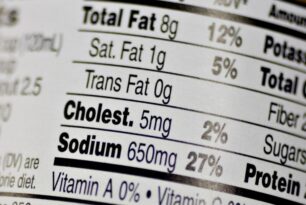The dairy aisle may seem like a harmless land of yogurt, cheese, and innocent-looking milk cartons, but for elderly folks and those carrying a few extra pounds, it’s a hidden battlefield of health booby traps.
Before you reach for that tub of ice cream or “heart-healthy” cheese that’s sneakily 90% saturated fat, here’s what you really need to watch out for in the supermarket’s most refrigerated region.
Milk Mayhem: Whole, Low-Fat, or Oat?
For seniors, bone health is a priority. For people with obesity, so is calorie management. The catch? Whole milk is high in saturated fat and calories, but skipping dairy altogether means missing out on calcium and vitamin D.
What to do:
- Try low-fat or plant-based milk (like fortified almond or oat milk) with added calcium and vitamin D.
- Check the sugar content—some “healthy” alternatives pour in more sugar than a donut.
Fun fact: Your bones don’t care about trends. Whether it’s oat or cow’s milk, they want calcium and vitamin D, not hype.
Yogurt: Health Halo or Hidden Dessert?
Yogurt is the dairy aisle’s golden child—but don’t be fooled. Many fruit-flavored yogurts have more added sugar than ice cream, and some are loaded with unnecessary thickeners and dyes.
Choose wisely:
- Go for plain Greek yogurt and sweeten it yourself with fruit or a drizzle of honey
- Avoid anything with “fruit on the bottom” unless you’re also craving a sugar crash
- Look for live cultures (great for gut health and digestion)
Pro tip: If your yogurt glows like a rave poster and has 16 grams of sugar per serving, it’s not a snack—it’s dessert in disguise.
Frozen Dairy Desserts: The Calorie Black Hole
Ice cream, frozen yogurt, “gelato-style desserts”—whatever they’re called, they can be dangerously easy to overeat, especially if you believe “frozen yogurt” is the healthier cousin. (Spoiler: it’s often not.)
- Tips to survive the frozen section:
- Buy single-serve cups to control portions
- Check labels for sugar, saturated fat, and serving size (no, the whole pint is not one serving… we’ve checked)
- Try blending frozen bananas for a DIY creamy treat with no dairy and no guilt
Danger zone: If you need a forklift to carry the “family-sized” tub and you live alone… maybe reconsider.
Butter and Spreads: The Slippery Slope
Real butter, margarine, vegan spreads—so many choices, so many cardiovascular landmines.
Look for:
- Plant-based spreads with healthy fats like olive or avocado oil
- Whipped butter (less fat per serving, but still tasty)
- And for the adventurous: try hummus or mashed avocado as toast toppers
Golden rule: If it melts like butter, spreads like butter, and tastes like butter—it’s probably butter. Use it sparingly.
The dairy aisle can be a source of great nutrition—or a trap disguised in lactose. For older adults and individuals managing weight, smart label reading and portion control are key.
Just remember:
- Calcium and vitamin D = good
- Saturated fat and sugar = not so good
- Shiny packaging promising “heart healthy” but hiding a cheese-flavored crime = suspicious
Next time you’re cruising past the cottage cheese, channel your inner detective, not your inner cheese-loving raccoon.




